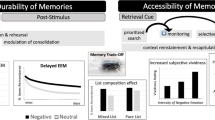Abstract
Despite research suggesting that lying may be a normal aspect of development and a fairly frequent occurrence in many adults, surprisingly little is known about its phenomenology and possible associations with relevant personality traits and cognitive functions. University students were invited to participate in an online study, which included a 91-item questionnaire and four neurocognitive tasks (selected to focus on frontal lobe function). The survey included questions about frequency of lying and reasons for doing so, mental health history, personality traits, religiosity, and insight into lying. Those who lied daily (“Daily Liars”) were compared to those who lied less frequently (“Non-Daily Liars”). 18.1% of the sample reported lying every day. Daily Liars showed worse grade point averages, quality of life, and self-esteem. Daily Lying was associated with negative functional impact on school, social, and family/home domains. We did not find evidence that is was associated with frontal lobe dysfunction on the cognitive tasks examined.
Similar content being viewed by others
References
Ford CV, King BH, Hollender MH. Lies and liars: psychiatric aspects of prevarication. Am J Psychiatry. 1988;145(5):554–62.
Feldman RS, Forrest JA, Happ BR. Self-presentation and verbal deception: do self-presenters lie more? Basic Appl Soc Psychol. 2002;24:163–70.
Gylfason HF, Arnardottir AA, Kristinsson K. More on gender differences in lying. Econ Lett. 2013;119:94–6.
Bhattacherjee Y. Why we lie. Natl Geogr. 2017:31–51.
McLeod B, Genereux RL. Predicting the acceptability and likelihood of lying: the interaction of personality with type of lie. Personal Individ Differ. 2008;45:591–6.
Phillips MC, Meek SW, Vendemia JM. Understanding the underlying structure of deceptive behaviors. Personal Individ Differ. 2011;50(6):783–9.
Gozna LF Vrij A, Bull R. The impact of individual differences on perceptions of lying in everyday life and in a high stake situation. Personal Individ Differ. 2001;31(7):1203–16. https://doi.org/10.1016/s0191-8869(00)00219-1.
Foerster A, Wirth R, Kunde W, Pfister R. The dishonest mind set in sequence. Psychol Res. 2017 Jul;81(4):878–99.
Suchotzki K, Verschuere B, Van Bockstaele B, Ben-Shakhar G, Crombez G. Lying takes time: a meta-analysis on reaction time measures of deception. Psychol Bull. 2017 Apr;143(4):428–53.
Morgan AB, Lilienfeld SO. A meta-analytic review of the relation between antisocial behavior and neuropsychological measures of executive function. Clin Psychol Rev. 2000;20(1):113–36.
Chamberlain SR, Derbyshire KL, Leppink EW, Grant JE. Neurocognitive deficits associated with antisocial personality disorder in non-treatment-seeking Young adults. J Am Acad Psychiatry Law. 2016;44(2):218–25.
Ford CV. Lies, lies, lies: the psychology of deceit. American Psychiatric Press. 1996.
Schreiber L, Odlaug BL, Grant JE. Impulse control disorders: updated review of clinical characteristics and pharmacological management. Front Psych. 2011;2:1.
Yang Y, Raine A, Lencz T, Bihrle S, Lacasse L, Colletti P. Prefrontal white matter in pathological liars. Br J Psychiatry. 2005;187(4):320–5.
Modell JG, Mountz JM, Ford CV. Pathological lying associated with thalamic dysfunction demonstrated by [99mTc]HMPAO SPECT. J Neuropsychiatr Clin Neurosci. 1992;4(4):442–6.
Oliveira C, Levine T. Lie acceptability: a construct and measure. Commun Res Rep. 2008;25(4):282–8.
Dahling JJ, Whitaker VG, Levy PE. The development and validation of a new Machiavellianism scale. J Manag. 2009;35:219–57.
Eisen JL, Phillips KA, Baer L, Beer DA, Atala KD, Rasmussen SA. The Brown assessment of beliefs scale: reliability and validity. Am J Psychiatry. 1998;155(1):102–8.
First MB, Spitzer RL, Gibbon, Williams JBW. The structured clinical interview for DSM-III-R personality disorders (SCID-II). Part I: Description. J Personal Disord. 1995;9:83–91.
American Psychiatric Association (APA). Diagnostic and statistical manual of mental disorders (4th ed., text rev.). Washington, DC. 2000.
Koenig HG, Büssing A. The Duke University religion index (DUREL): a five-item measure for use in Epidemological studies. Religions. 2010;1;1(1):78–85.
Young KS. Internet addiction: the emergence of a new clinical disorder. Cyberpsychol Behav. 1998;1(3):237–44.
Rosenberg M. Society and the adolescent self-image. Princeton: Princeton University Press; 1965.
Koffarnus MN, Bickel WK. A 5-trial adjusting delay discounting task: accurate discount rates in less than one minute. Exp Clin Psychopharmacol. 2014 Jun;22(3):222–8.
Owen AM, Morris RG, Sahakian BJ, Polkey CE, Robbins TW. Double dissociations of memory and executive functions in working memory tasks following frontal lobe excisions, temporal lobe excisions or amygdalo-hippocampectomy in man. Brain. 1996;119(Pt 5):1597–615.
Baker SC, Rogers RD, Owen AM, Frith CD, Dolan RJ, Frackowiak RS, et al. Neural systems engaged by planning: a PET study of the tower of London task. Neuropsychologia. 1996;34(6):515–26.
Owen AM, Roberts AC, Polkey CE, Sahakian BJ, Robbins TW. Extra-dimensional versus intra-dimensional set shifting performance following frontal lobe excisions, temporal lobe excisions or amygdalo-hippocampectomy in man. Neuropsychologia. 1991;29(10):993–1006.
Talwar V, Lee K. Social and cognitive correlates of children's lying behavior. Child Dev. 2008 Jul-Aug;79(4):866–81.
Sarzyńska J, Falkiewicz M, Riegel M, Babula J, Margulies DS, Nęcka E, et al. More intelligent extraverts are more likely to deceive. PLoS One. 2017 Apr 27;12(4):e0176591.
Chandler M, Fritz AS, Hala S. Small-scale deceit: deception as a marker of two-, three-, and four-year-olds' early theories of mind. Child Dev. 1989;60(6):1263–77.
Author information
Authors and Affiliations
Corresponding author
Ethics declarations
Disclosure of Potential Conflicts of Interest
Dr. Grant has received research grants from NIAAA, AFSP, TLC Foundation, and Takeda Pharmaceuticals. Dr. Grant receives yearly compensation from Springer Publishing for acting as Editor-in-Chief of the Journal of Gambling Studies and has received royalties from Oxford University Press, American Psychiatric Publishing, Inc., Norton Press, and McGraw Hill. Dr. Chamberlain’s research is supported by a Wellcome Trust Clinical Fellowship to Dr. Chamberlain (110,049/Z/15/Z). Dr. Chamberlain consults for Cambridge Cognition, Shire, and Promentis. Ms. Paglia has no potential conflicts of interest.
Ethical Approval
All procedures performed in studies involving human participants were in accordance with the ethical standards of the institutional and/or national research committee and with the 1964 Helsinki declaration and its later amendments or comparable ethical standards.
Informed Consent
Informed consent was obtained from all individual participants included in the study.
Additional information
Publisher’s Note
Springer Nature remains neutral with regard to jurisdictional claims in published maps and institutional affiliations.
Rights and permissions
About this article
Cite this article
Grant, J.E., Paglia, H.A. & Chamberlain, S.R. The Phenomenology of Lying in Young Adults and Relationships with Personality and Cognition. Psychiatr Q 90, 361–369 (2019). https://doi.org/10.1007/s11126-018-9623-2
Published:
Issue Date:
DOI: https://doi.org/10.1007/s11126-018-9623-2




